Half a world, and half a lifetime away.
Discussion
Jesus how many planes did Argentina lose? Morale must have been very low for their pilots, knowing there is an extremely high chance they won't make it back.
I see we lost no harriers in air to air combat, is this the sole thanks to the sidewinder missiles that the US gave us?
Reading elsewhere, I see Argentina totally failed to shoot down our Vulcan during Black Buck which is strange because at the time we thought it was a suicide mission?
I see we lost no harriers in air to air combat, is this the sole thanks to the sidewinder missiles that the US gave us?
Reading elsewhere, I see Argentina totally failed to shoot down our Vulcan during Black Buck which is strange because at the time we thought it was a suicide mission?
Beknown said:
I see we lost no harriers in air to air combat, is this the sole thanks to the sidewinder missiles that the US gave us?
I remember reading at the time various things in the media about "ViFF" as an avoidance tactic - Vector in Forward Flight. The Harrier pilot would swivel the exhaust nozzles to violently change the trajectory of the plane if being pursued by an Argentine fighter. No idea if it was effective as a defensive tactic. Or whether it was where Maverick got his "I'll hit the brakes and he'll right by" idea from...Europa1 said:
I remember reading at the time various things in the media about "ViFF" as an avoidance tactic - Vector in Forward Flight. The Harrier pilot would swivel the exhaust nozzles to violently change the trajectory of the plane if being pursued by an Argentine fighter. No idea if it was effective as a defensive tactic. Or whether it was where Maverick got his "I'll hit the brakes and he'll right by" idea from...
I think viffing was a potential last ditch tactic hyped by the press, fighter pilots really don't like slowing down in combat.The all aspect homing sidewinders were certainly a big help. Also the fact that the Argentinians were operating at the limit of their range.
I think the main reason was that Argentina was trying to avoid the Harriers as far as possible and concentrate on bombing, considering the limited number of Harriers available for air defence this probably seemed a good idea at the time. In hindsight they would have been better off concentrating on wiping out the Harriers even accepting losses of 3 or 4 to one, then bombing once they had air superiority.
Not that this takes anything away from the Harrier or it's crews. The Harrier was very capable at close range air to air combat, and the Royal Navy have always trained their fighter pilots in this kind of maneuvering even when other air arms decided it was obsolete in the age of missiles. Where do you think the US Navy got the idea for Top Gun? (The course, not the film).
Dr Jekyll said:
The Harrier was very capable at close range air to air combat, and the Royal Navy have always trained their fighter pilots in this kind of maneuvering even when other air arms decided it was obsolete in the age of missiles. Where do you think the US Navy got the idea for Top Gun? (The course, not the film).
I don't know, but it was way before the Falklands (off topic)https://en.wikipedia.org/wiki/United_States_Navy_S...
Vaud said:
Dr Jekyll said:
The Harrier was very capable at close range air to air combat, and the Royal Navy have always trained their fighter pilots in this kind of maneuvering even when other air arms decided it was obsolete in the age of missiles. Where do you think the US Navy got the idea for Top Gun? (The course, not the film).
I don't know, but it was way before the Falklands (off topic)https://en.wikipedia.org/wiki/United_States_Navy_S...
Beknown said:
J
I see we lost no harriers in air to air combat, is this the sole thanks to the sidewinder missiles that the US gave us?
Almost entirely the Argentinians did not engage in air to air combat. They had some early attempts at the start, and even shot down a couple of our helicopters; but mostly their bombers came in unescorted and unarmed (bar cannon) for air to air combat. The sidewinders the US gave us where the latest model, they certainly helped but for most of the engagements the older model would have done just as well. The newer version was designed to enable head-on shots to be more likely to find their mark. Where as most firings took place the with Harriers chasing their foe.I see we lost no harriers in air to air combat, is this the sole thanks to the sidewinder missiles that the US gave us?
The Argentinians lost 51 aircrew shot down in 99 aircraft. There is a summary of the loses here:
https://en.wikipedia.org/wiki/Argentine_air_forces...
Some aircrew ejected, of those some where picked up by their own side, some by us and some not at all.
Vaud said:
Dr Jekyll said:
The Harrier was very capable at close range air to air combat, and the Royal Navy have always trained their fighter pilots in this kind of maneuvering even when other air arms decided it was obsolete in the age of missiles. Where do you think the US Navy got the idea for Top Gun? (The course, not the film).
I don't know, but it was way before the Falklands (off topic)https://en.wikipedia.org/wiki/United_States_Navy_S...
useful stats on Argentine Air Force - aircraft involved (aircraft lost)
1st Air Brigade -
Lockheed C-130H Hercules, 7 (1)
Lockheed KC-130H Hercules Tanker 2
Boeing 707 3
Fokker F-28 6
Fokker F-27 12
2nd Air Brigade
English Electric B.Mk62 Canberra 8 (2)
Grupo Aérofotográfico - Learjet 35A-L 2 (1)
3rd Air Brigade -
FMA IA 58 Pucará 24 (14)
4th Air Brigade - McDonnell Douglas A-4C Skyhawk 15 (9)
5th Air Brigade - McDonnell Douglas A-4B Skyhawk <35 (10)
6th Air Brigade - Israel Aircraft Industries Dagger 30 (11)
7th Air Brigade -
Boeing CH-47C Chinook 2
Bell 212 2
8th Air Brigade - Dassault Mirage IIIEA 17 (2)
1st Air Brigade -
Lockheed C-130H Hercules, 7 (1)
Lockheed KC-130H Hercules Tanker 2
Boeing 707 3
Fokker F-28 6
Fokker F-27 12
2nd Air Brigade
English Electric B.Mk62 Canberra 8 (2)
Grupo Aérofotográfico - Learjet 35A-L 2 (1)
3rd Air Brigade -
FMA IA 58 Pucará 24 (14)
4th Air Brigade - McDonnell Douglas A-4C Skyhawk 15 (9)
5th Air Brigade - McDonnell Douglas A-4B Skyhawk <35 (10)
6th Air Brigade - Israel Aircraft Industries Dagger 30 (11)
7th Air Brigade -
Boeing CH-47C Chinook 2
Bell 212 2
8th Air Brigade - Dassault Mirage IIIEA 17 (2)
25th May Supplemental
The loss of HMS Coventry
In the meantime, the other Skyhawk pair was aiming for Coventry. Again, the Sea Dart/Type 909 combo failed to lock, so the main gun was being fired optically, and everyone who had a personal weapon was banging merrily away.
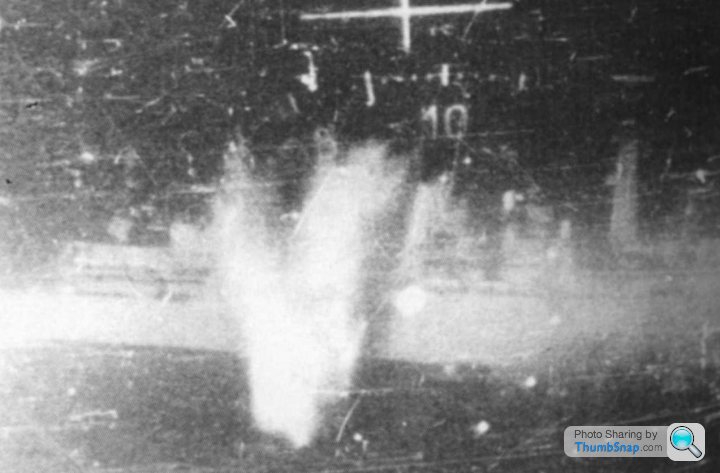
Over on Broadsword, the air warfare crowd got the Sea Wolf system functioning again, and a proper lock. At the last second, however, Coventry, trying to manoeuvre to get a clear lock with the radar, crossed in front of Broadsword, masking her. The frigate couldn't shoot.
One bomb fell astern, the other three entered the port side and all exploded. Nineteen were killed instantly.
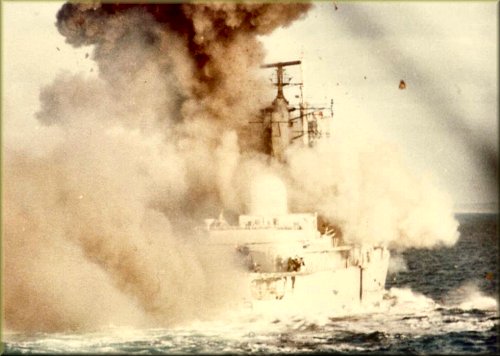
No order to abandon ship was given. Coventry indicated her intention to sink by capsizing early on, and it was un-necessary to incite people to get off.
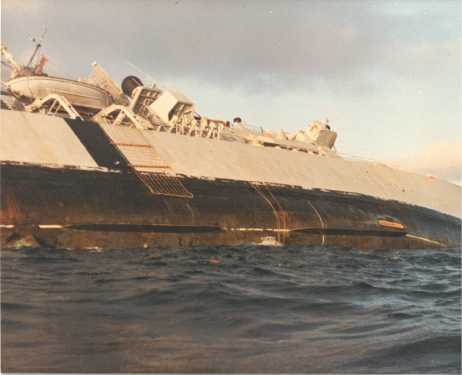
The Cross of Nails went to the bottom of the sea with her.
All of Woodward's initial three air defence destroyers were now gone. After the war, divers were sent to the wreckage to retrieve the Cross of Nails.
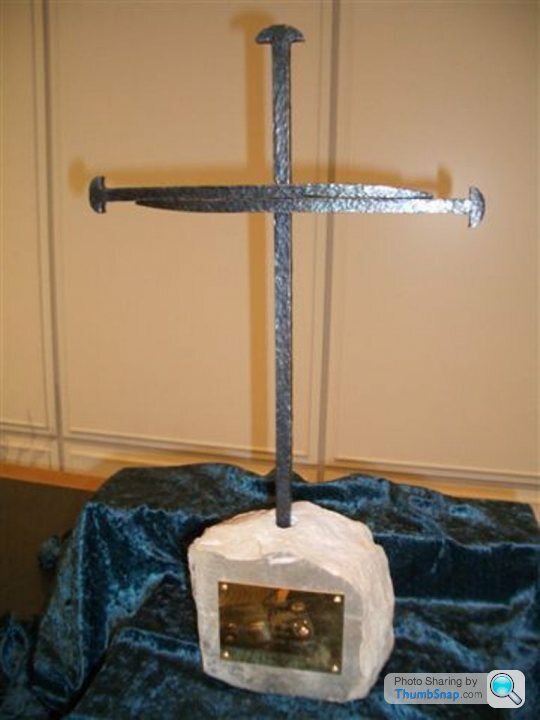
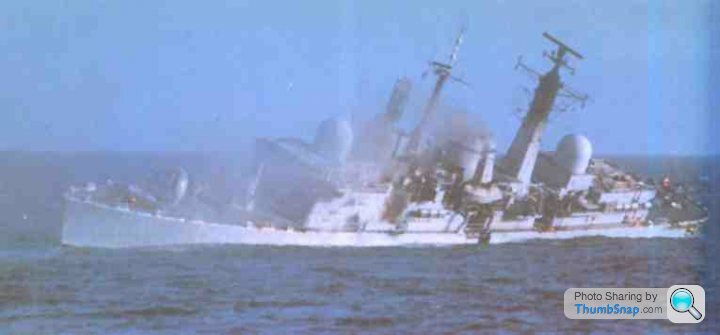
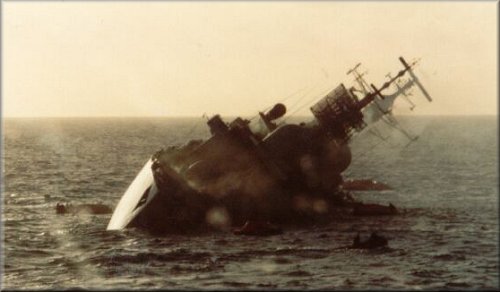
Read the Board of Inquiry report into the loss of HMS Coventry.
Roll of Honour
SD.
The loss of HMS Coventry
In the meantime, the other Skyhawk pair was aiming for Coventry. Again, the Sea Dart/Type 909 combo failed to lock, so the main gun was being fired optically, and everyone who had a personal weapon was banging merrily away.

Over on Broadsword, the air warfare crowd got the Sea Wolf system functioning again, and a proper lock. At the last second, however, Coventry, trying to manoeuvre to get a clear lock with the radar, crossed in front of Broadsword, masking her. The frigate couldn't shoot.
One bomb fell astern, the other three entered the port side and all exploded. Nineteen were killed instantly.

No order to abandon ship was given. Coventry indicated her intention to sink by capsizing early on, and it was un-necessary to incite people to get off.

The Cross of Nails went to the bottom of the sea with her.
All of Woodward's initial three air defence destroyers were now gone. After the war, divers were sent to the wreckage to retrieve the Cross of Nails.



Read the Board of Inquiry report into the loss of HMS Coventry.
Roll of Honour
- Marine Engineering Mechanic Frank O. Armes
- Chief Weapons Engineering Artificer John D. L. Caddy
- Marine Engineering Artificer Paul B. Callus
- Weapons Engineering Mechanic John K. Dobson
- Petty Officer Michael G. Fowler
- Weapons Engineering Mechanic Ian P. Hall
- Lieutenant Rodney R. Heath
- Laundryman Kye Ben Kwo
- Weapons Engineering Artificer David J. A. Ozbirn
- Lieutenant Commander Glen S. Robinson-Moltke
- Leading Radio Operator Bernard J. Still
- Marine Engineering Artificer Geoffrey L. J. Stockwell
- Weapons Engineering Artificer David A. Strickland
- Able Seaman Adrian D. Sunderland
- Marine Engineering Mechanician Stephen Tonkin
- Cook Ian Turnbull
- Weapons Engineering Artificer Philip P. White
- Weapons Engineering Artificer Ian R. Williams
- Marine Engineering Mechanic Paul T. Mills.
SD.
25th May Supplemental.
18:00. Carrying two of the last three of Argentina's air-launched Exocets, two Super-Etendards go looking for a carrier to hit, taking quite a detour in order to arrive from an unexpected direction.
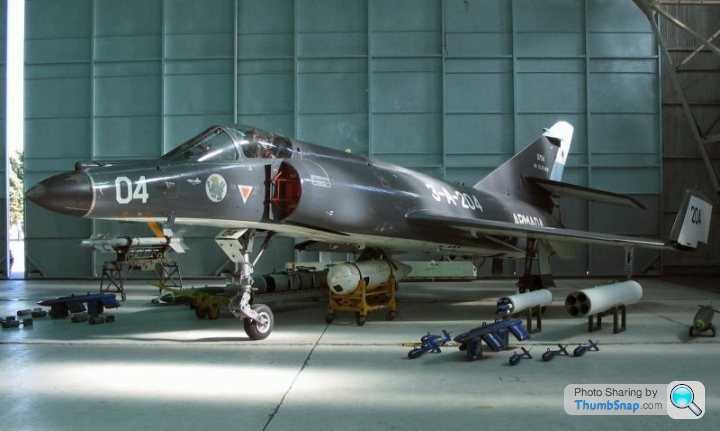
18:38. Finding a suitably large number of blips on the radar, the Etendards let loose, and turn for home. Their emissions are detected by HMS i]Exeter[/i], which sounds the alarm.
Initially, the missiles lock onto HMS Ambuscade, the just-arrived Type-21, but are decoyed away. After punching through the chaff clouds, they had adjusted course away from the carriers. Instead, they picked up the somewhat carrier-like 13,000 ton container vessel Atlantic Conveyor.
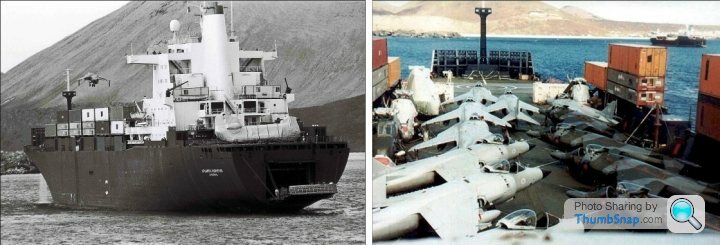

The image showing the missile tracks below is taken from a now declassified SECRET memo to cabinet on the 2nd of June 1982.
18:38. Finding a suitably large number of blips on the radar, the Etendards let loose, and turn for home. Their emissions are detected by HMS i]Exeter[/i], which sounds the alarm.
Initially, the missiles lock onto HMS Ambuscade, the just-arrived Type-21, but are decoyed away. After punching through the chaff clouds, they had adjusted course away from the carriers. Instead, they picked up the somewhat carrier-like 13,000 ton container vessel Atlantic Conveyor.

The image showing the missile tracks below is taken from a now declassified SECRET memo to cabinet on the 2nd of June 1982.
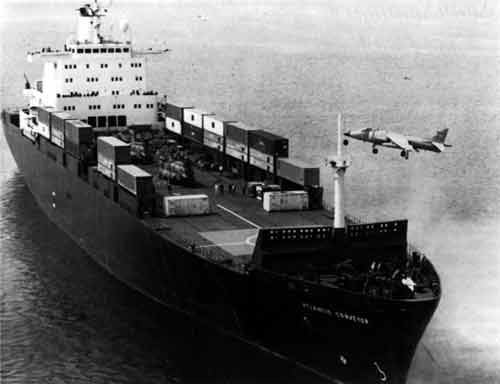
Though the Harriers she had transported had flown off to the carriers a few days prior, she was still heavily loaded.
1841. Both missiles impact on the port quarter, and a fire starts.
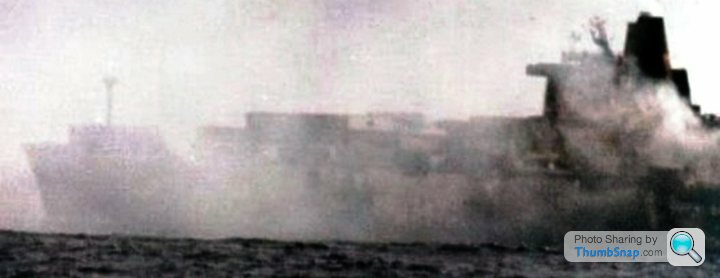
1920. With 11 men dead, and a fire creeping towards the cargo area (where, amongst all the fuel and other goodies, were six hundred bombs for the Harriers), the ship is abandoned. 134 men get off the ship.
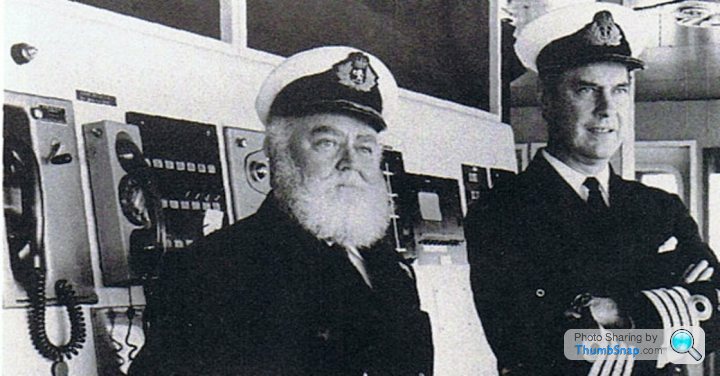
Last man off, again, was the ship's captain, Ian North, known as Captain Birdseye, for obvious reasons.
Although he made it off the ship, he never made it to a life raft. Despite being helped to one by the senior naval officer, Cpt Layard, a large wave broke over them. Layard resurfaced. The sixty-year-old North did not, claimed by the sea on which he had spent his adult life. The ship burns throughout the night. You will note the kill marking painted on the side of the Etendard above.
In addition to the various munitions aboard her, Atlantic Conveyor also had the entire materials loadout to construct a land base for the Harriers, relieving the pressure on the carriers, a whole load of spare parts for helicopters, three Lynxes, seven Wessexes, and four of the heavy-lift CH-47 Chinooks. One of those four, call-sign Bravo November happened to be in the air at the time, and escaped damage. This helicopter was quite possibly to become the most famous Chinook ever built. In the meantime, with the majority of the air lift capability now burning in the South Atlantic, the Marines and Army would now have to walk.
Read the Board of Inquiry report into the loss of SS Atlantic Conveyor
Roll of Honour
Merchant Navy
18:00. Carrying two of the last three of Argentina's air-launched Exocets, two Super-Etendards go looking for a carrier to hit, taking quite a detour in order to arrive from an unexpected direction.

18:38. Finding a suitably large number of blips on the radar, the Etendards let loose, and turn for home. Their emissions are detected by HMS i]Exeter[/i], which sounds the alarm.
Initially, the missiles lock onto HMS Ambuscade, the just-arrived Type-21, but are decoyed away. After punching through the chaff clouds, they had adjusted course away from the carriers. Instead, they picked up the somewhat carrier-like 13,000 ton container vessel Atlantic Conveyor.


The image showing the missile tracks below is taken from a now declassified SECRET memo to cabinet on the 2nd of June 1982.
18:38. Finding a suitably large number of blips on the radar, the Etendards let loose, and turn for home. Their emissions are detected by HMS i]Exeter[/i], which sounds the alarm.
Initially, the missiles lock onto HMS Ambuscade, the just-arrived Type-21, but are decoyed away. After punching through the chaff clouds, they had adjusted course away from the carriers. Instead, they picked up the somewhat carrier-like 13,000 ton container vessel Atlantic Conveyor.

The image showing the missile tracks below is taken from a now declassified SECRET memo to cabinet on the 2nd of June 1982.

Though the Harriers she had transported had flown off to the carriers a few days prior, she was still heavily loaded.
1841. Both missiles impact on the port quarter, and a fire starts.

1920. With 11 men dead, and a fire creeping towards the cargo area (where, amongst all the fuel and other goodies, were six hundred bombs for the Harriers), the ship is abandoned. 134 men get off the ship.

Last man off, again, was the ship's captain, Ian North, known as Captain Birdseye, for obvious reasons.
Although he made it off the ship, he never made it to a life raft. Despite being helped to one by the senior naval officer, Cpt Layard, a large wave broke over them. Layard resurfaced. The sixty-year-old North did not, claimed by the sea on which he had spent his adult life. The ship burns throughout the night. You will note the kill marking painted on the side of the Etendard above.
In addition to the various munitions aboard her, Atlantic Conveyor also had the entire materials loadout to construct a land base for the Harriers, relieving the pressure on the carriers, a whole load of spare parts for helicopters, three Lynxes, seven Wessexes, and four of the heavy-lift CH-47 Chinooks. One of those four, call-sign Bravo November happened to be in the air at the time, and escaped damage. This helicopter was quite possibly to become the most famous Chinook ever built. In the meantime, with the majority of the air lift capability now burning in the South Atlantic, the Marines and Army would now have to walk.
Read the Board of Inquiry report into the loss of SS Atlantic Conveyor
Roll of Honour
Merchant Navy
- Bosun John B. Dobson
- Mechanic Frank Foulkes
- Steward David R. S. Hawkins
- Mechanic James Hughes
- Captain Ian H. North, D.S.C.
- Seaman Chan Chi Shing
- Mechanic Ernest M. Vickers
- 1st Radio Officer Ronald Hoole
- Seaman Ng Por
- Chief Petty Officer Edmund Flanagan
- Air Engineering Mechanic (R) Adrian J. Anslow
- Leading Air Engineering Mechanic (L) Don L. Price
Europa1 said:
I remember reading at the time various things in the media about "ViFF" as an avoidance tactic - Vector in Forward Flight. The Harrier pilot would swivel the exhaust nozzles to violently change the trajectory of the plane if being pursued by an Argentine fighter. No idea if it was effective as a defensive tactic. Or whether it was where Maverick got his "I'll hit the brakes and he'll right by" idea from...
One of the major rules in ACM (Air Combat Manoeuvring) is to maintain your Energy/Manoevre capability.In other words you keep your Energy up (ie PE or KE) because having Energy allows you to dictate the fight.
What you don't do is needlessly throw Energy away.
Much was made by the Press about VIFFing but such would bleed Energy very quickly, rapidly leaving you slow and out of ideas. Fine as a last ditch tactic in a 1 v 1 fight but bloody lethal in a 'furball'.
The whole "Hit the brakes and he'll fly right by" is utter Holywood fiction.
Hugo a Gogo said:
Daggers (which are Mirages in all but name) had air to air missiles though?
The Dagger was effectively a Mirage 5 with no air to air radar and very different to a Mirage III.Yes you could put a 'winder on it but this would be purely a defensive capability.
The Mirage IIIs were retained on the Argentinian mainland as a direct result of the Black Buck raids (and the obvious perceived threat to the Homeland).
Additionally, if you are flying a Fighter-Bomber such as a Dagger or an A4 Skyhawk, aside from the fact that you do not have an Offensive Counter Air capability, you just do not want to 'mix it' with enemy fighters because to do so (and chances are you will lose very rapidly) you would need to jettison your ordnance. If you do that then straight away the Defenders have won because they have denied you your mission.
DMN said:
The sidewinders the US gave us where (sic) the latest model, they certainly helped but for most of the engagements the older model would have done just as well. The newer version was designed to enable head-on shots to be more likely to find their mark. Where as most firings took place the with Harriers chasing their foe.
That's not strictly true.The 'winder in service with the FAA and RAF in early '82 was the AiM9G which was a rear hemisphere only homer. The US gave us the latest AiM9L which was the first 'all aspect' 'winder (ie the first with which you could shoot someone in the face).
While it is true to say the majority (if not all) 'winder engagements were from the rear hemisphere, the fact remains that the AiM9L had a far wider rear hemisphere engagement (as well as off boresight) envelope than did the AiM9G.
Indeed, study of the engagements shows that, had the Sea Harriers carried AiM9G, they would have shot down significantly fewer aircraft.
Fortunately, what the Argentines didn't know at the time was that the AiM9L was less countermeasure resistant than it's earlier brethren.
26th May
The Carrier Battle Group moved to the eastern section of the TEZ during the night of 25th/26th May.
The Group was joined by HMS Avenger, Active, Bristol, Cardiff, Minerva and Penelope.
The Battle Group spent most of the day replenishing from the RFAs.
HMS Ambuscade was detached to inspect the derelict Atlantic Conveyor.
With the navy really now quite irked at the Army and Marines just sitting in San Carlos while they run out of ships, pressure also starts mounting in London for some good news to report to the public for a change.
Brigadier Thompson is summoned to the satellite terminal at Ajax Bay, and given a talking to by London.
“Start walking. And, by the way, capture Goose Green, it's the closest place that can be captured.
No, we don't care that the Argentinians have just reinforced the place with the 12th Regiment, we need good news, and we need it fast.
Capture Goose Green.”
Afteroon: 2 Para sets out a-walking the 13 miles or so to Goose Green. This is duly reported by the BBC. On the World Service - in Argentina. Combined with other instances, such as the report broadcast on 23rd May that Argentine bombs were not exploding on impact, the British military have ever since been somewhat distrustful of the organisation.
The other commanders are given their marching orders to other locations, each man carrying some 120lbs of equipment apiece. Stanley is about 60 miles away over open, not-too-nice terrain. Some commanders believe that even if the troops manage to make it, they'll be too exhausted to fight a battle at the other end.
UN Security Council Resolution 505 instructs de Cuellar to seek negotiated settlement.
I'd like to thank all the other contributors to this thread who have given great technical and personal insights into tactics and weapon systems in use at the time. Like many others I read and watched the reports of Harriers "VIFFing" and never actually thought it might actually be a bad idea - to a 15 year old it just sounded absolutely impressive. I wonder if any of these reports may have impacted on Argentinean air warfare tactics - expecting the Harrier to slam the brakes on in front of you must have been in the minds of the pilots. Does anyone have any actual knowledge of this? The contacts I made many years ago for the original thread were mainly naval personnel - it really would be interesting to hear the views of professional pilots with regard to the psychological effect the tactic may have had.
SD.
The Carrier Battle Group moved to the eastern section of the TEZ during the night of 25th/26th May.
The Group was joined by HMS Avenger, Active, Bristol, Cardiff, Minerva and Penelope.
The Battle Group spent most of the day replenishing from the RFAs.
HMS Ambuscade was detached to inspect the derelict Atlantic Conveyor.
With the navy really now quite irked at the Army and Marines just sitting in San Carlos while they run out of ships, pressure also starts mounting in London for some good news to report to the public for a change.
Brigadier Thompson is summoned to the satellite terminal at Ajax Bay, and given a talking to by London.
“Start walking. And, by the way, capture Goose Green, it's the closest place that can be captured.
No, we don't care that the Argentinians have just reinforced the place with the 12th Regiment, we need good news, and we need it fast.
Capture Goose Green.”
Afteroon: 2 Para sets out a-walking the 13 miles or so to Goose Green. This is duly reported by the BBC. On the World Service - in Argentina. Combined with other instances, such as the report broadcast on 23rd May that Argentine bombs were not exploding on impact, the British military have ever since been somewhat distrustful of the organisation.
The other commanders are given their marching orders to other locations, each man carrying some 120lbs of equipment apiece. Stanley is about 60 miles away over open, not-too-nice terrain. Some commanders believe that even if the troops manage to make it, they'll be too exhausted to fight a battle at the other end.
UN Security Council Resolution 505 instructs de Cuellar to seek negotiated settlement.
I'd like to thank all the other contributors to this thread who have given great technical and personal insights into tactics and weapon systems in use at the time. Like many others I read and watched the reports of Harriers "VIFFing" and never actually thought it might actually be a bad idea - to a 15 year old it just sounded absolutely impressive. I wonder if any of these reports may have impacted on Argentinean air warfare tactics - expecting the Harrier to slam the brakes on in front of you must have been in the minds of the pilots. Does anyone have any actual knowledge of this? The contacts I made many years ago for the original thread were mainly naval personnel - it really would be interesting to hear the views of professional pilots with regard to the psychological effect the tactic may have had.
SD.
I'm not a pilot, but I have been a fast-jet WSO in the RAF for the last fifteen-odd years. Personally I'd be delighted to see someone cash in all their energy - while I might have lost the planned shot opportunity, I'll probably have won the fight if I maintain speed/energy. It's an effective last-ditch manoeuvre but leaves you very compromised without the ability to run away outside the attackers WEZ.
Great thread btw, I've not been to the Falklands in the best part of a decade but blatting round the islands and up 'A4 Alley' in an F3 certainly gave you a bit of insight into how the war was fought and the bravery of those involved (on both sides).
Great thread btw, I've not been to the Falklands in the best part of a decade but blatting round the islands and up 'A4 Alley' in an F3 certainly gave you a bit of insight into how the war was fought and the bravery of those involved (on both sides).
shed driver said:
2 Para sets out a-walking the 13 miles or so to Goose Green. This is duly reported by the BBC. On the World Service - in Argentina. Combined with other instances, such as the report broadcast on 23rd May that Argentine bombs were not exploding on impact, the British military have ever since been somewhat distrustful of the organisation.
Can someone please explain this new level of f kwittery? Surely there are certain protocols around BBC correspondents and what they do and don't report, or when they report it so as not to adversely impact our armed forces during a conflict.
kwittery? Surely there are certain protocols around BBC correspondents and what they do and don't report, or when they report it so as not to adversely impact our armed forces during a conflict.I thought the first casualty of war was truth not common sense!
The BBC didn't exactly cover them self's in glory, they constantly referred to our forces as the British more or less got accused of treason in the press and hosted one program cant remember if it was news night or panorama with a big picture of HMS Antelope exploding in the background until they had so many phone compliants they took it down.
Gassing Station | The Lounge | Top of Page | What's New | My Stuff




